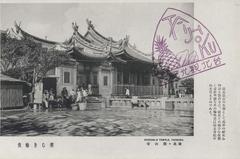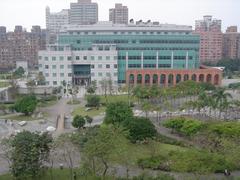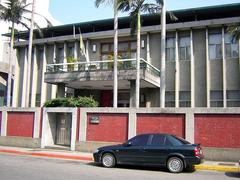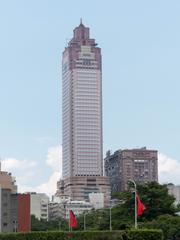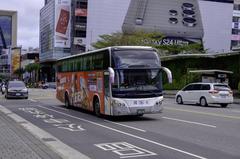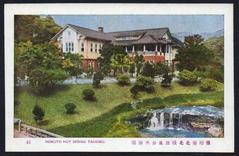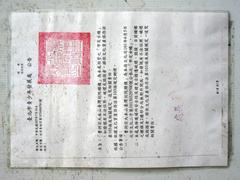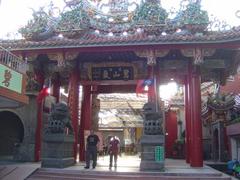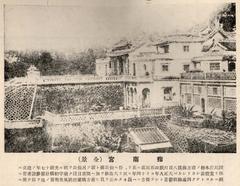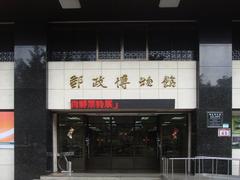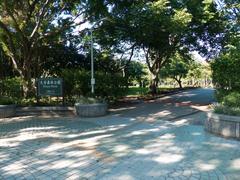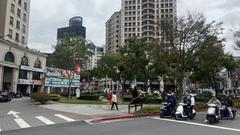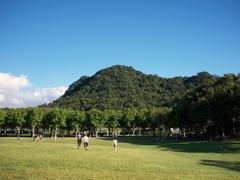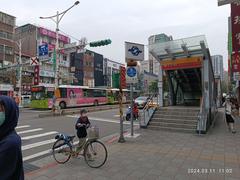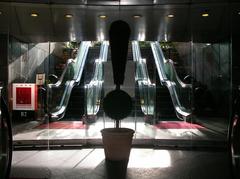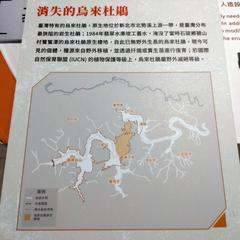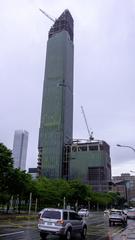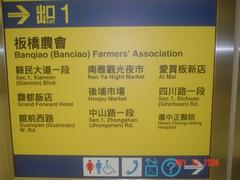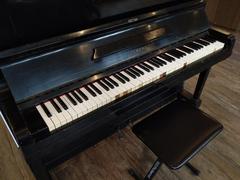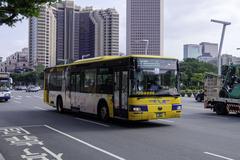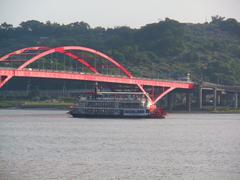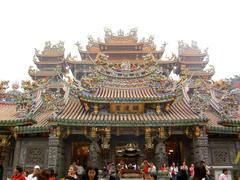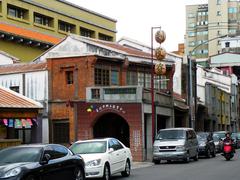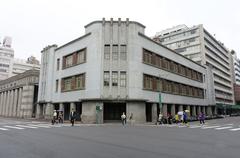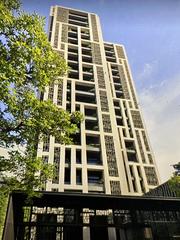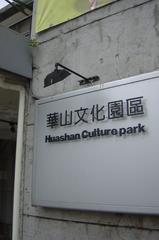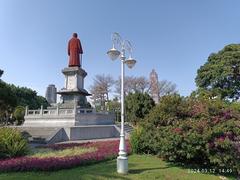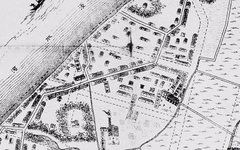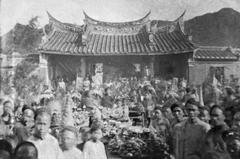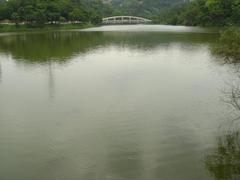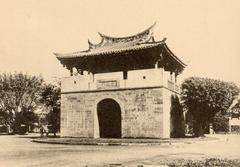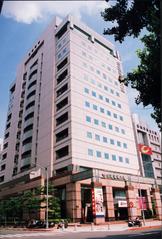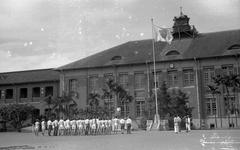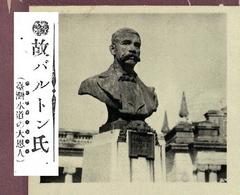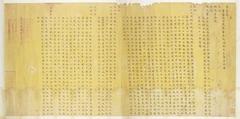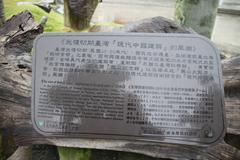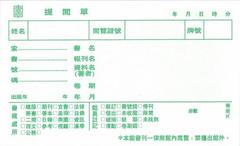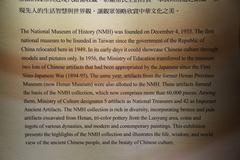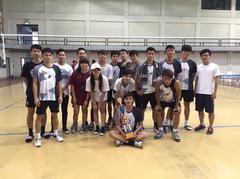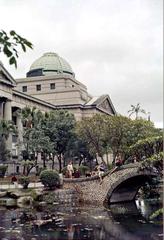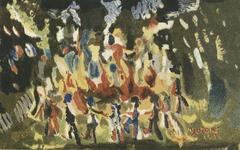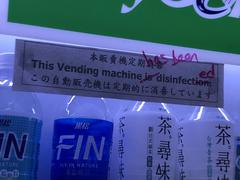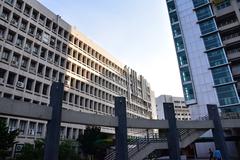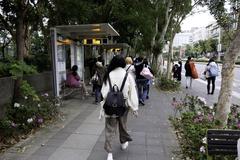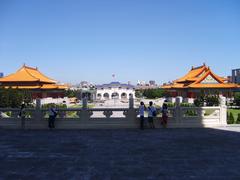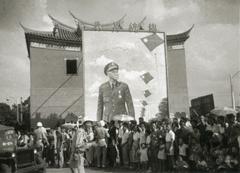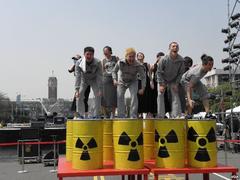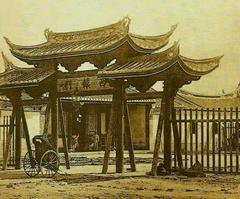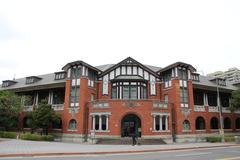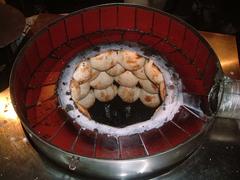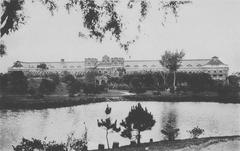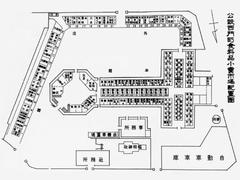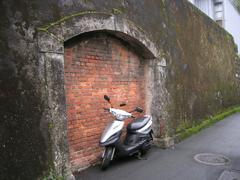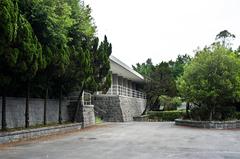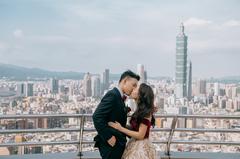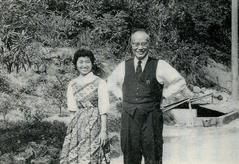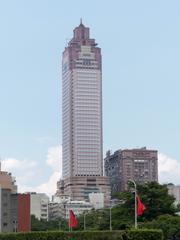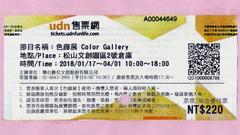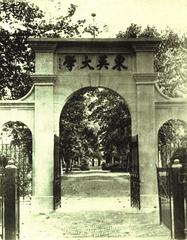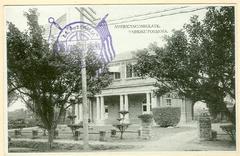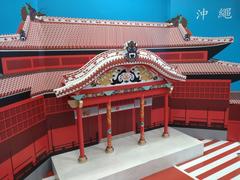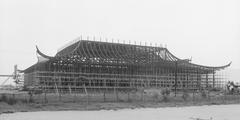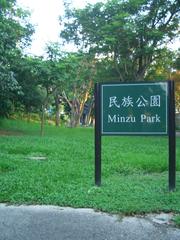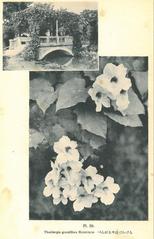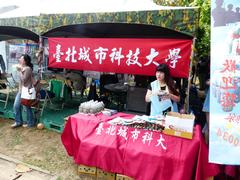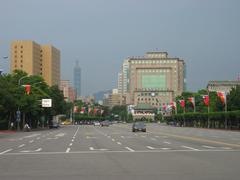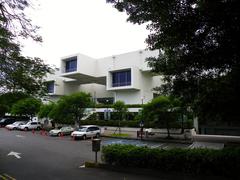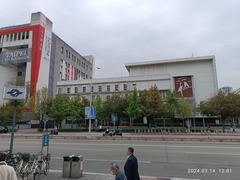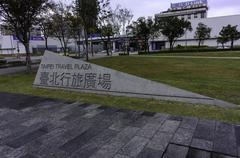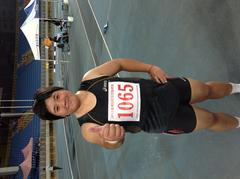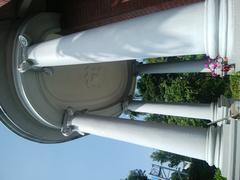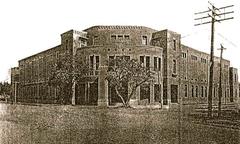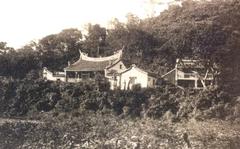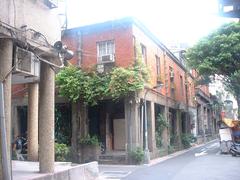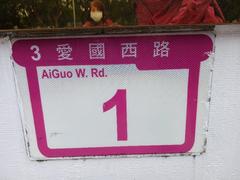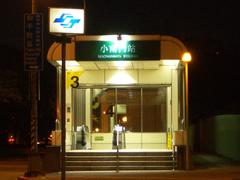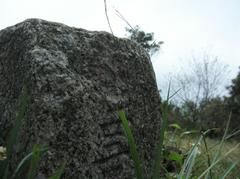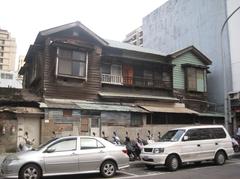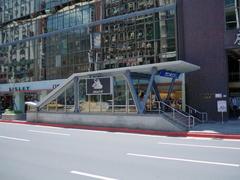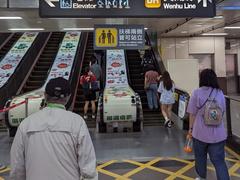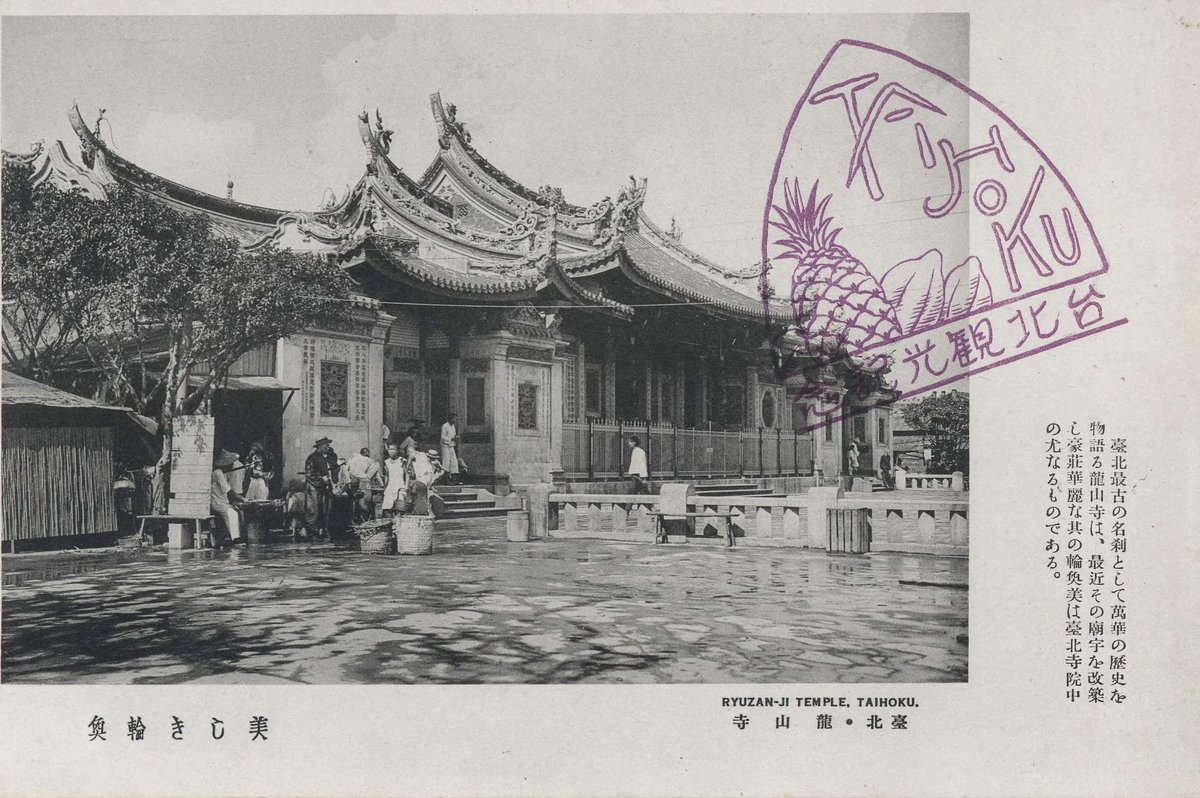
Bangka Lungshan Temple: Visiting Hours, Tickets, and Taipei Historical Site Guide
Date: 14/06/2025
Introduction
Bangka Lungshan Temple (艋舺龍山寺), located in Taipei’s historic Wanhua District, stands as a living testament to Taiwan’s religious syncretism, architectural artistry, and community spirit. Founded in 1738 by Fujianese settlers, the temple is renowned for its harmonious blend of Buddhist, Taoist, and folk beliefs, exquisite craftsmanship, and its role as a vibrant community hub. This detailed guide covers everything you need to plan your visit—from opening hours and ticketing to etiquette, architecture, and nearby attractions.
For further insights and travel planning, consult Taipei Travel, Around the World 4U, and Smithsonian Magazine.
Historical Overview
Origins and Evolution
Established in 1738 during the Qing Dynasty, Bangka Lungshan Temple was built by immigrants from Fujian Province to serve as both a sanctuary for worship and a gathering place for the community (Around the World 4U; Out of Town Blog). The temple’s primary deity is Guanyin, the Bodhisattva of Compassion, but over 100 other Buddhist, Taoist, and folk deities are also venerated, reflecting Taiwan’s pluralistic spiritual landscape (Smithsonian Magazine).
Architectural Restoration
Lungshan Temple has endured earthquakes, fires, and significant wartime damage, particularly during World War II bombings. Each reconstruction phase has respected traditional techniques, blending Qing Dynasty elements with later artistry. The temple’s current appearance is the result of careful restorations, prioritizing historical authenticity and structural resilience (Trip.com).
Visiting Information
Opening Hours
- Daily: 6:00 AM – 10:00 PM
- Peak times: Weekends, public holidays, and the 1st/15th days of the lunar month are busiest; early mornings and late evenings are quieter (Taipei Travel).
Admission
- Entry is free. Donations are welcome to support temple maintenance and community activities.
Location and Access
- Address: No. 211, Guangzhou St., Wanhua Dist., Taipei City 108, Taiwan
- MRT: Longshan Temple Station (Blue Line, Exit 1) is a short walk away.
- Bus: Multiple city bus lines serve the area.
- Taxi: Convenient and widely available.
Accessibility
- Ramps at main entrances and accessible restrooms make the temple welcoming for visitors with disabilities.
- Staff can assist with mobility needs.
Architectural & Artistic Highlights
Lungshan Temple exemplifies traditional southern Chinese temple architecture, featuring:
- Three-hall, two-courtyard layout: Typical of Fujianese design, facilitating ritual flow and ventilation.
- Dragon Pillars: Massive bronze columns with coiled dragons symbolize power and protection.
- Roof Decorations: Sweeping ceramic-tiled roofs adorned with “jian nian” mosaics—colorful, three-dimensional scenes of dragons, phoenixes, and legendary figures (Trip.com).
- Intricate Woodwork: Carved beams and brackets depict mythological animals and floral motifs.
- Altars and Statues: The central altar enshrines Guanyin; other altars house Mazu, Guan Yu, Yue Lao, and more, each surrounded by ornate panels and inlaid mother-of-pearl.
Color symbolism is prevalent: red for prosperity, gold for sanctity, blue and green for harmony and renewal.
Religious and Cultural Significance
Syncretic Worship
Lungshan Temple is a microcosm of Taiwanese religious life, where Buddhism, Taoism, and folk traditions intermingle seamlessly. Worshippers seek blessings from a diverse pantheon, participate in rituals, and consult oracles using jiaobei blocks and kau cim sticks.
Major Festivals and Daily Practice
- Daily Chanting: Held at 6:00–6:45 AM, 8:00–8:45 AM, and 3:45–5:00 PM.
- Festivals: Celebrations of Lunar New Year, Guanyin’s birthday, Mazu’s birthday, Ghost Festival, and Lantern Festival fill the temple with music, offerings, and processions.
Social Role
Beyond its religious importance, the temple is a focal point for cultural events and neighborhood gatherings, supporting Wanhua’s identity as Taipei’s oldest district (Go Team Josh).
Visitor Etiquette and Practical Tips
Dress and Behavior
- Wear modest clothing covering shoulders and knees.
- Remove hats and sunglasses before entering prayer halls.
- Maintain a quiet, respectful demeanor.
Ritual Participation
- Incense and offerings (flowers, fruit) are available near the entrance.
- Observe or join rituals respectfully; avoid touching statues unless invited.
- Move clockwise around the central courtyard and step back from the altar before turning away.
Photography
- Permitted in outer areas and main halls unless otherwise indicated.
- Avoid flash, tripods, and photographing worshippers without consent.
Safety and Security
- Secure belongings, especially during crowded festivals.
- The information desk can assist with lost and found or emergencies.
Special Events & Guided Tours
- Festivals: Plan visits around major celebrations for a vibrant cultural experience.
- Guided Tours: Arrangeable via local operators or the Heritage and Culture Education Center of Taipei. Tours provide in-depth historical and architectural context.
Nearby Attractions
- Bopiliao Historical Block: Restored Qing Dynasty streetscapes within walking distance.
- Huaxi Street Night Market: Renowned for street food and traditional snacks.
- Taipei Botanical Garden: Lush greenery and tranquil landscapes nearby.
Frequently Asked Questions (FAQ)
Q: Are there entry fees to visit Lungshan Temple?
A: No, entry is free. Donations are welcome.
Q: What are the temple’s opening hours?
A: 6:00 AM to 10:00 PM daily.
Q: Is the temple wheelchair accessible?
A: Yes, ramps and accessible restrooms are provided.
Q: Can I take photos inside?
A: Yes, in designated areas; be respectful and avoid photographing worshippers without permission.
Q: Are guided tours available?
A: Yes, through local providers or cultural centers.
Q: When is the best time to visit?
A: Early mornings on weekdays for a quieter experience; festivals for lively rituals and events.
Visuals and Multimedia
- [Insert high-quality images with descriptive alt text: e.g., “Main hall exterior of Bangka Lungshan Temple”; “Intricate dragon mosaic roof decorations”]
- [Embed interactive map showing temple and nearby attractions]
- [Link to virtual tour or video walkthrough, if available]
Summary and Recommendations
Bangka Lungshan Temple stands as a cornerstone of Taipei’s cultural and spiritual heritage. Its centuries-old architecture, religious diversity, and community vitality make it a must-visit site for travelers and locals alike. Free admission, convenient access, and thoughtful accessibility features ensure a welcoming experience for all. Enhance your visit by exploring nearby historical streets and markets, or by joining a guided tour for deeper insight.
For up-to-date information on events and visitor tips, download the Audiala app and consult the resources below.
Sources and Further Reading
- Around the World 4U
- Out of Town Blog
- Smithsonian Magazine
- Trip.com
- Go Team Josh
- Taipei Travel
- Wikipedia: Longshan Temple (Taipei)
- WeFunTaiwan: 8 Things You Should Know About Longshan Temple
- Taiwanderers: Longshan Temple Taipei
- Namaste Toni Hao: Longshan Temple Taipei
- Taiwan Obsessed: Longshan Temple Taipei
- True Wind Healing Travel: Lungshan Temple in Taipei
